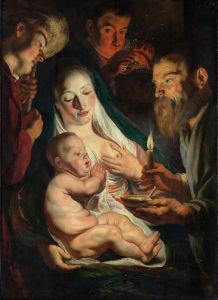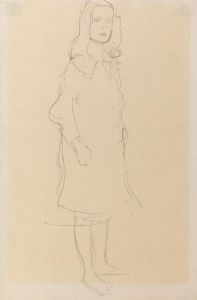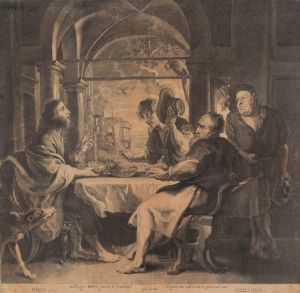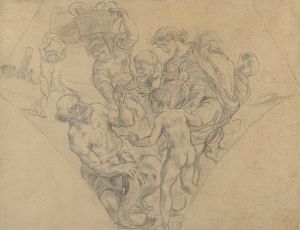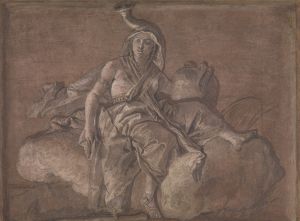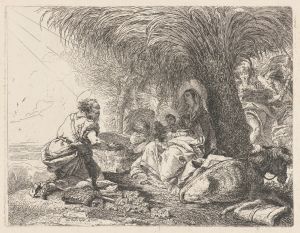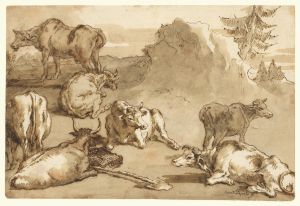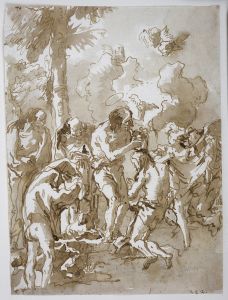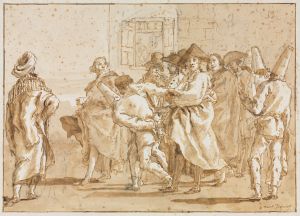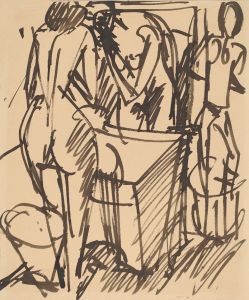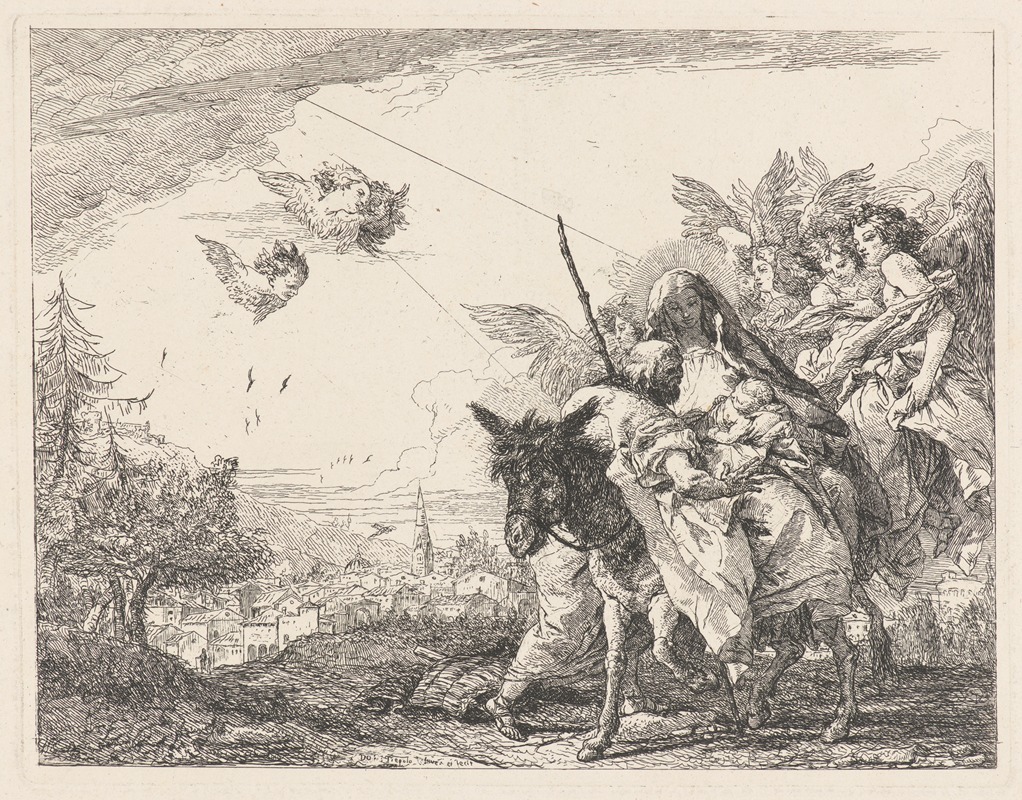
Joseph, Standing, Adores the Child
A hand-painted replica of Giovanni Domenico Tiepolo’s masterpiece Joseph, Standing, Adores the Child, meticulously crafted by professional artists to capture the true essence of the original. Each piece is created with museum-quality canvas and rare mineral pigments, carefully painted by experienced artists with delicate brushstrokes and rich, layered colors to perfectly recreate the texture of the original artwork. Unlike machine-printed reproductions, this hand-painted version brings the painting to life, infused with the artist’s emotions and skill in every stroke. Whether for personal collection or home decoration, it instantly elevates the artistic atmosphere of any space.
Giovanni Domenico Tiepolo was an Italian painter and printmaker, known for his contributions to the Rococo movement. He was the son of the renowned artist Giovanni Battista Tiepolo and followed in his father's footsteps, developing a distinctive style that combined elements of his father's grand manner with his own unique approach to composition and subject matter. One of his notable works is "Joseph, Standing, Adores the Child."
"Joseph, Standing, Adores the Child" is a painting that exemplifies Giovanni Domenico Tiepolo's skill in religious subject matter, a common theme in his oeuvre. The painting depicts Saint Joseph, a figure often portrayed in Christian art as the earthly father of Jesus Christ, in a moment of adoration and reverence towards the Christ Child. This work is a testament to Tiepolo's ability to convey deep religious sentiment and human emotion through his art.
The composition of the painting is characterized by its delicate use of color and light, which are hallmarks of the Rococo style. Tiepolo's use of soft, pastel hues and gentle contrasts creates a serene and intimate atmosphere, drawing the viewer into the sacred moment depicted. The figures are rendered with a graceful fluidity, showcasing Tiepolo's mastery of form and movement.
In this painting, Joseph is depicted standing, a posture that signifies his role as a protector and guardian. His expression is one of awe and devotion, reflecting the spiritual significance of the scene. The Christ Child, often central in such compositions, is depicted with a sense of innocence and divine presence, emphasizing the miraculous nature of the Nativity.
Tiepolo's work often included a blend of realism and idealism, and "Joseph, Standing, Adores the Child" is no exception. The figures are lifelike yet imbued with a sense of the divine, a balance that Tiepolo achieved through his keen understanding of human anatomy and his ability to infuse his subjects with a sense of spiritual transcendence.
The painting is also notable for its compositional balance. Tiepolo's arrangement of figures and use of space guide the viewer's eye through the scene, creating a harmonious and cohesive visual narrative. This careful composition is a testament to Tiepolo's skill as a storyteller, using visual elements to convey complex theological themes.
While specific details about the commission or provenance of "Joseph, Standing, Adores the Child" may not be extensively documented, it is consistent with Tiepolo's body of work during the 18th century, a period when religious art was highly sought after in Italy. Tiepolo's paintings were often commissioned for churches and private collections, where they served both devotional and decorative purposes.
Giovanni Domenico Tiepolo's contribution to the art world extends beyond his paintings. He was also an accomplished printmaker, creating a series of etchings that further showcased his artistic versatility. His works continue to be studied and admired for their technical excellence and emotional depth.
In summary, "Joseph, Standing, Adores the Child" is a fine example of Giovanni Domenico Tiepolo's ability to blend religious narrative with artistic beauty. Through his use of color, composition, and expressive figures, Tiepolo captures a moment of divine interaction, inviting viewers to reflect on the spiritual themes central to the Christian tradition.






